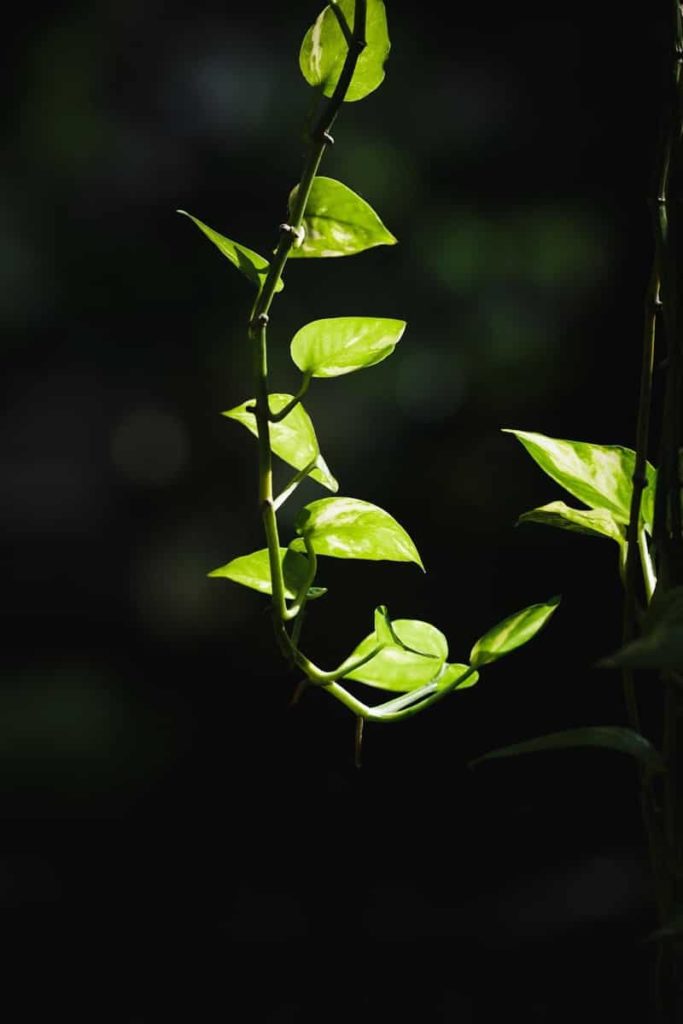Many beautiful plants are available for indoor growing, but one of them is Pothos. These stunning trailing vines are incredibly popular. Their propagation is also incredibly simple so that you can turn a Pothos into many. Pothos are sturdy and easy-to-grow plants that can survive even in a challenging situation. But sometimes, our Pothos struggles to survive. It could be due to inadequate care provided to them.
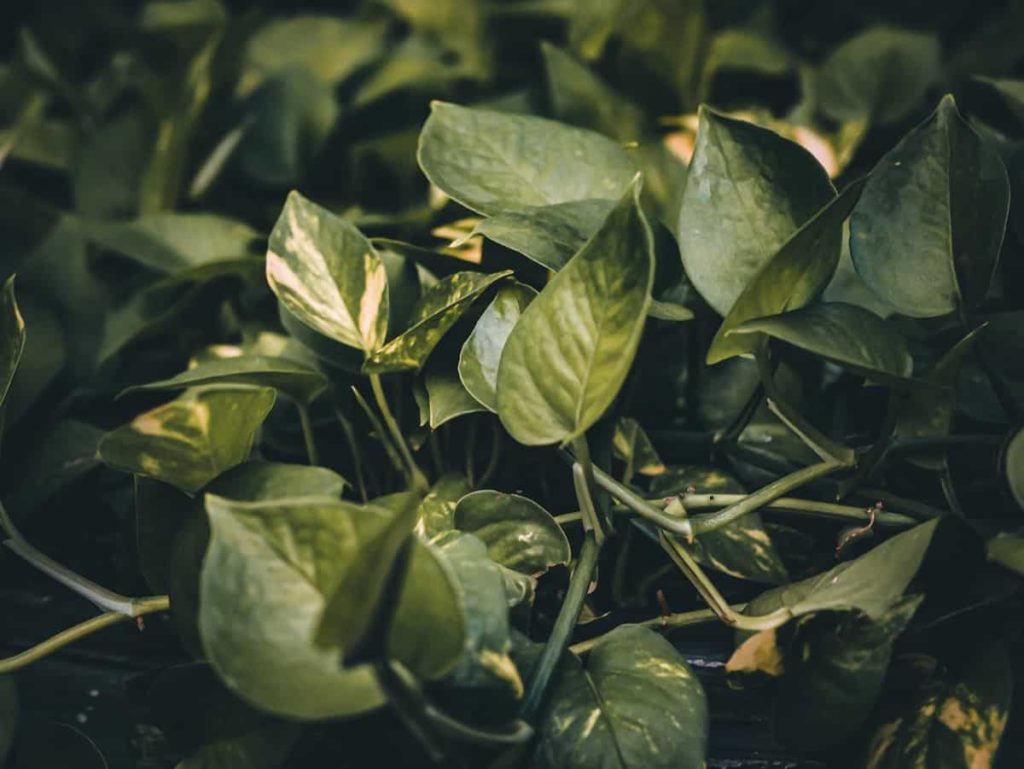
Dehydration, over-watering, insufficient light, inappropriate temperature, and pests are major causes of Pothos dying. To save Pothos, water it when the soil in the pot dries up to 70 to 80% and gives the plant at least six hours of indirect but bright sunlight. Do not place Pothos close to heating or cooling equipment, and spray horticultural oil on leaves if they have insects on them. Fortunately, when you identify symptoms, you can take steps to solve these problems and bring your Pothos back to good health.
Common Pothos/Money plant problems
Pothos leaves turn brown
Pothos leaves can be brown due to causes such as root rot. Pothos can tolerate extreme conditions. However, it can cause root rot. The root rot causes the plant to wilt and leaves to turn yellow or brown. Another reason leaves are brown may be an attack by the fungus or bacteria.
Solution – If you see leaves, stems, and other parts getting brown, it’s a fungal problem. It is proposed to remove the affected parts of the plant to reduce the spread. Some horticultural oil, sulfur, and potassium bicarbonate can help reduce the spread in the event of fungal attacks. If the problem is due to a bacterial attack, we will see brown spots inside your Pothos leaves. Remove the affected leaves to control the spread in case of spread. You can also use chemical compounds such as pesticides.
Pothos is dying
Root rot
Root rot is the main enemy of all plants, without exception. Pothos can also die from root rot; some are more susceptible to watering than other plants. Roots can often start rotting as a result of too much water. Very wet soil is the best environment for root rot.
Solution – Dilute 10 milliliters of hydrogen peroxide in 100 milliliters of water and treat all root wounds. Let the plant dry for a few hours. The roots should be dry. Remove any yellow leaves. If there are many damaged leaves, remove only the most damaged leaves. Plant Pothos twice as large a pot as before with large drainage holes.
Dehydration
In nature, Pothos are connected to trees, and their root system is so deep that water is from the ground. When the soil dries up, it can absorb moisture from the air.
Solution – Place the Pothos in a bucket of water that is slightly deeper than the pot. Let the plant soak in water for a few minutes, then allow any excess to be suitable through drainage holes.
Temperature stress
Inappropriate temperature is a factor that can cause difficulties with any plant. As Pothos is called a tropical plant, it likes heat. Even small deviations in temperature can affect its appearance. Pothos can be stressed by colds at night and the day’s heat.
Solution –Do not keep Pothos close to heaters, air conditioners, fans, refrigerators, etc. If it is likely to get cold, do not take Pothos outdoors. Also, do not do it in extreme heat.
In case you missed it: Growing Money Plant in Pots, Indoors at Home
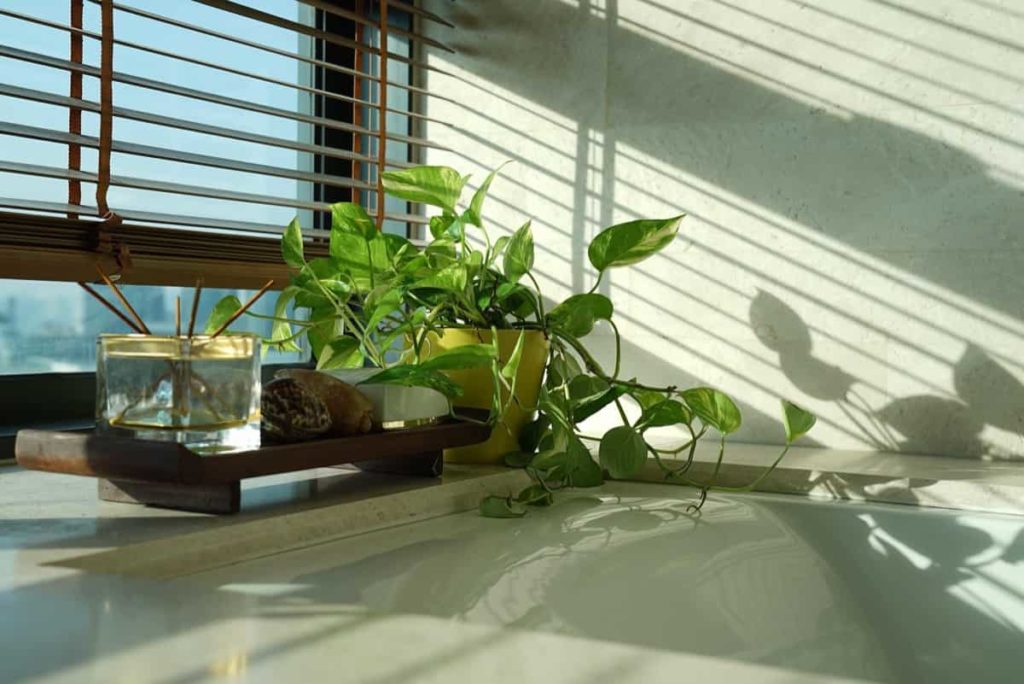
Pests
A large number of pests can cause considerable damage to your Pothos, and as a result, they may slowly start dying. At first, you may not even notice uninvited guests, but if there are too many of them, the plant’s shape will change.
Solution – Dilute a teaspoon of dish soap in half a gallon of water. Then add two tablespoons of horticultural oil and stir the mixture. Spray the Pothos leaves and stem thoroughly with this mixture. Repeat sprays once a week until you see that the pests are gone.
Insufficient light
Insufficient light can lead to the loss of Pothos. At first, the plant will grow in very little light, but as a result, it will spread. The development will come at the cost of the energy reserves first stored, leading to the plant’s fatigue and its final death. The second case is a lot more direct sunlight. It will burn the leaves, and they will wilt. If the damage is too severe, the Pothos will die.
Solution – Move Pothos to a point where they will get indirect sunlight for at least 6 hours. Avoid placing Pothos directly in sunlight. Install a source of artificial light if sunlight is not enough in the room.
Pothos leaves curling
The most common cause of curling Pothos leaves is underwater or uneven moisture in the soil.
Solution – If the soil is dry, consider watering your plant and keep it on the dry side of the moist. Pothos don’t need a lot of water, but it should be enough. Another factor to consider in the curling of leaves is to check the insects. To avoid the condition of any insects, try using a neem oil solution to spray plants with lukewarm water for two weeks.
Pothos leaves are falling
Pothos losing their leaves can be a serious threat to the plant. Mostly the reason for this problem is that the plant is trying to change according to nature. When the plant is placed near the radiator or near the window sill where it encounters draft, it can shed the leaves.
Solution – The Pothos plant requires moisture for transpiration, and its absence can lead to the dropping of leaves. Keeping the plant underwater can cause leaf loss, although more water will similarly encourage the fall of leaves along with the potential root defect problem.
Stunted growth
Most Pothos species will grow 12 to 18 inches each month under the right conditions during spring and summer. There are many reasons this growth can slow down or stop, and everyone has their fix. Enlarged roots that appear above the soil line or grow through drainage holes indicate that the plant is root-root. Rootbound Pothos plants have no more space inside the pot to grow; they stop growing.
Solution – A quick and easy repotting is all you need to solve the problem. Remove the plant from the pot, stir the soil and replant to a pot of maximum size. Water well after the repot to encourage new roots growth.
Lack of sunlight also contributes to slow growth. Low light levels mean low photosynthesis, which produces food in the form of sugar to keep the plant alive and boost growth. Low photosynthesis results in slow growth, which can’t grow completely if sunlight is unavailable.
Solution – Move the plant to a bright spot to improve growth but directly remove it from sunlight.
Lack of sunlight, as well as lack of nutrients, also cause the same problem.
Solution – After a few months of growth in the same pot, to maintain the right nutrients in the soil, Pothos will need fertilization. You can apply balanced liquid fertilizer once a month in spring and summer.
In case you missed it: Growing Hydroponic Money Plant (Devil’s Ivy/Pothos)
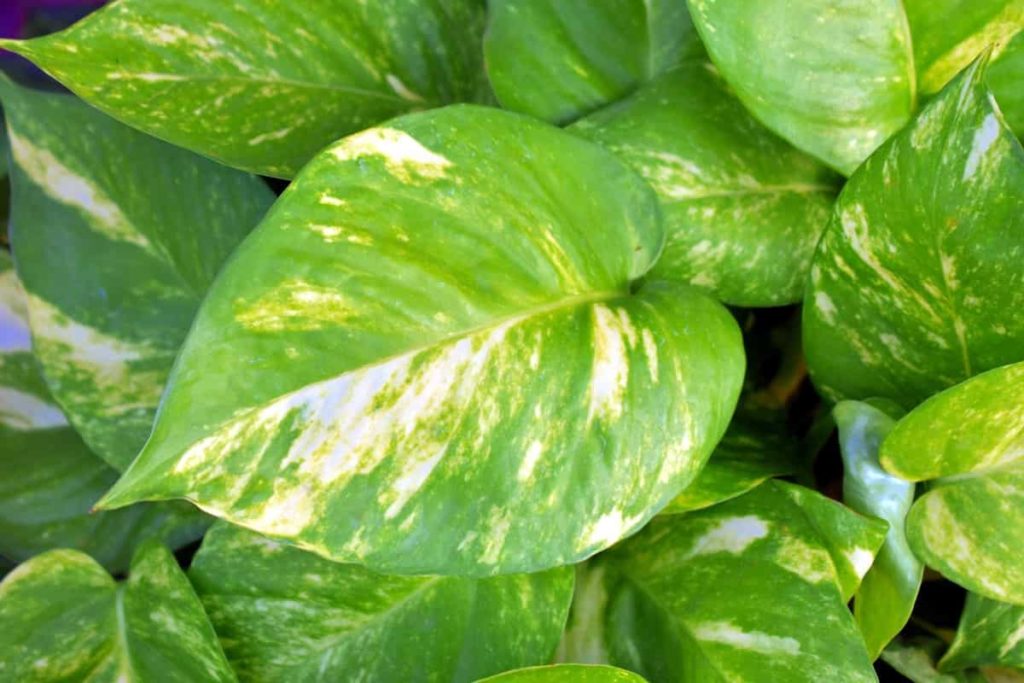
Yellow Leaves
Yellow leaves are a common houseplant problem. The common reason for yellowing leaves is over-watering.
Solution – Pothos plants prefer to dry their soil a little before watering again. If the soil remains moist for longer, either because it does not drain well or because there are no drainage holes in the pot, it can start rotting the roots.
A nutritional imbalance in the soil can also cause yellow leaves. Although Pothos plants need extra nutrients once a month during the growing season, fertilizing more often, or consuming more fertilizer than recommended, will not result in better growth as some might expect.
Solution – If the leaves turn yellow immediately after you have put in the fertilizer, stop fertilizing for a few months. Ensure you follow the packaging instructions and dilute correctly, or use the fertilizer at half the power, to avoid further damage.
Brown tips
Brown spots on leaves are usually in irregular and predictable patterns. But, Pothos leaves can also be brown at the tips, indicating a different problem. Two of the most common causes of browning tips are underwater and moisture deficiency. Both problems are related to moisture levels in leaves. When the leaves lack moisture, they start drying on the edges of the stems.
Solution – Pothos should be watered as soon as the top few inches of soil dries up. Although they prefer dry soil to wet soil, they should not be left in completely dry soil for a long time. Water your plant from the bottom to irrigate the soil completely. Water frequently by regularly checking the soil moisture. To improve moisture around your plants, you can place the pot on a tray filled with pebbles and water.
Lack of Variegation
Heavily variegated leaves have much less chlorophyll than their non-variegated counterparts. It is essential for chlorophyll photosynthesis which promotes growth and keeps the plant alive. When the plant is in a low-light place, the plant produces more chlorophyll to compensate for the lack of photosynthesis, making different parts green again.
Solution – If the leaves start losing their different looks, move the plant to a bright place in your home. The more different the plant, the brighter indirect light they need to thrive. The leaves will gradually become more different after a few weeks in bright light.
Stretched Vines
If your healthy Pothos starts to spread, leaves grow further and are further separated, and low sunlight levels are the problem. Pothos is known to tolerate low light levels quite well. However, this does not mean they can grow with light. If plants are placed in a very dark corner or a room with no windows, they will start to exhibit growth problems such as stretching trunks.
In case you missed it: How To Grow Money Plant At Home – A Full Guide
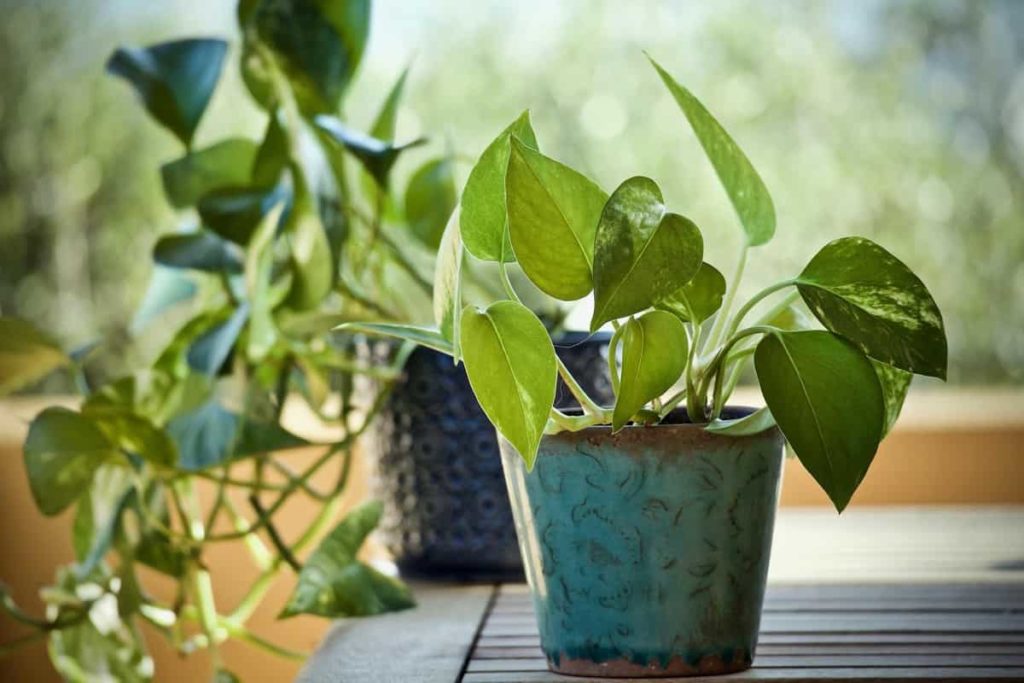
Solution – The stems begin to spread to find better light sources. If sunlight is a problem, you can see them moving toward the nearest light source. Move them to just a bright spot to improve growth. Unfortunately, stretched stems will not grow to normal, but pruning them back can encourage new, healthy, and compact growth.
Pests
Scale
The soft scale is one of the most destructive houseplant pests around. These round brown insects are usually found on the stems of Pothos and can look like leaf nodes at a glance. Yellow and deformed leaves are common symptoms, with growth at the development stages. Like the white fly, they leave behind the bee, resulting in the growth of the cotton mold.
Solution – Getting rid of the scale can be difficult. If the chemical insecticidal problem is not solved, you may need to discard your Pothos to avoid spreading the problem to your other houseplants.
Aphids
These small pests are difficult to spot on their own, but when the infection increases, they are easily identified when grouped into clusters. One or two aphids sucking your plant leaves and stem will not cause much damage. However, the main problem with the aphids is their ability to reproduce. Some insects quickly become an entire colony that will completely overwhelm your plant if not treated.
Solution – More minor diseases can be dealt with by hand. Each bug can be picked up or washed leaves in the sink. Larger groups need a stronger solution like neem-oil to address this problem.
Fungus Gnats
These small flying insects hang around the houseplant soil in a warm and humid environment, laying their eggs in pots to reproduce.
Solution – Sticky traps help reduce this problem, but since they live in the soil, the only way to solve this problem permanently is usually repotting.
Spider mites
Spider mites are small insects that usually attack various indoor plants, including your Pothos.
Solution – Although they are difficult to find on their own, the traps they leave between the leaf and stem make it easier to identify the problem. Spider mites are difficult to find but usually found under leaves. Be sure to check there when hunting them with your horticultural oil or insecticidal soap.
Whitefly
Whiteflies are related to soft bodies and tiny bugs. They hide under the leaves but usually move or fly when you disturb them.
Solution – Like mealybugs, white fly eats plant juice, which develops stunts and damages leaves. They also leave behind a sticky substance that can encourage mold growth. Whiteflies are usually removed from insecticidal soaps. But, since they have their layers and hang around plants, you can also remove them from the sticky traps.
In case you missed it: How to Grow Copper Money Plant in Pots
Mealybugs
These oval-shaped pests leave a white powdery substance on small eggs found around leaves and leaves and trunks. The substance is designed to protect insects while they eat leaf juice, causing yellow and distorted leaves.
Solution -When dealing with mealybugs using your selected insects, ensure you remove all eggs to prevent the disease from spreading to other houseplants.
Diseases
Blight
Southern blight can affect plants and other tropical plants that prefer warm and humid conditions. Symptoms of blight include wilt or yellowed leaves.
Solution – Blight is not a common problem for indoor plants but can spread indoors from infected outdoor plants. Urgent action is needed to avoid the final death of the plant and spreading to other houseplants.
Bacteria wilt
Like many other diseases, it also spreads in hot and humid weather. The leaves will turn yellow and brown on the stems, and the veins in the leaves will turn black.
Solution – Cut the affected part of the stem and place it in a glass of water. If a substance comes out of the stem, the bacteria will likely affect it.
In case you missed it: Best Fertilizer for Money Plant: Homemade, Natural, and Liquid
Leaf Spot
The golden Pothos leaves affected by the leaf spot will have many small brown spots.
Solution – Remove the disease leaves immediately and spray fungicides for prevention and treatment. Focus on ventilation during this period.
Anthracnose
Anthracnose mainly affects the middle part of the leaves, with reddish-brown or black-brown spots.
Solution – As the disease progresses, spots gradually spread and show annular stripes. First, remove the diseased leaves and use fungicides to control the anthracnose.
Conclusion
Pothos plants are usually trouble-free but can show signs of stress due to incorrect or pest and disease concerns. Place your Pothos in their preferred conditions will limit these problems and ensure that your plant stays healthy throughout the year.
- How to Grow Tomatoes Organically at Home: A Comprehensive Guide
- Organic Gardening on a Budget: Low-Cost Methods and Materials
- Gongura Seed Germination and Planting Methods
- Cabbage Seed Germination and Selection
- Broccoli Seed Germination and Selection
- Asparagus Seed Germination and Variety Selection
- Seasonal Flower Gardening: Best Practices for Spring, Summer, Fall, and Winter
- How to Grow Hibiscus from Flower
- Plantation Ideas for Home Decoration: A Beginners Guide
- Flower Garden Designs and Layouts for Beginners
- Planting and Spacing Techniques in Papaya: A Beginner’s Guide
- Growing Gold: Essential Techniques for Planting Pineapples
- How to Make Kalanchoe Plant Bushy: Home Remedies and Solutions
- 11 Reasons Why Your Gardenia is Not Blooming: Home Remedies and Solutions
- Eco Elegance: The Guide to Designing a Drought-Tolerant Landscape
- Gardening on a Slope: Strategies for Hillside Landscaping
- Nourish and Flourish: Top Organic Mulches for Thriving House Plants
- Everything You Want to Know about Indian Mogra Flower: Discover Uses and Growing
- Green Thumb Success: Expert Tips for Cultivating Greenhouse Pumpkins All Year Round
- Maximize Growth & Flavor: The Ultimate Guide to Companion Planting in Herb Gardens
- How to Control Rhododendron Problems Naturally: Home Remedies and Organic Ways to Fix Them
- Natural Magic: The Remarkable Benefits of Cinnamon for Plants
- Best Steps to Revive Dying Tulip with Natural and Organic Treatment
- 10 Reasons Why Your Angel Trumpet is Not Blooming: Remedies and Treatment
- How to Fix Periwinkle Leaf and Flower-Related Problems: Natural Remedies and Solutions
- How to Fix Zinnias Leaf and Flower Problems: Discover Natural and Home Remedies
- Organic Steps to Induce Lemon Tree Flowers: A Comprehensive Guide
- Bloom Booster: Crafting the Perfect Homemade Bougainvillea Fertilizer
- Optimizing Growth: A Guide to Applying NPK Fertilizer for Potted Plants
- 10 Best Homemade Fertilizers for Rubber Plant: DIY Recipes and Application Method
- How to Boost Female Pumpkin Flowers: Effective Steps for More Flowers and High Yields
- Transform Your Indoor Garden: Top Benefits of Pink Salt for Houseplants
- 10 Best Homemade Fertilizers for Peacock Plants (Calathea): Easy DIY Guide
- Unlock Blooms: 9 Reasons Why Your Potted Chrysanthemum is Not Blooming
- 8 Reasons Why Your Potted Hibiscus is Not Blooming: Fix it with Simple Solutions
- Unlock Blooms: 9 Key Reasons Your Potted Frangipani Won’t Flower

